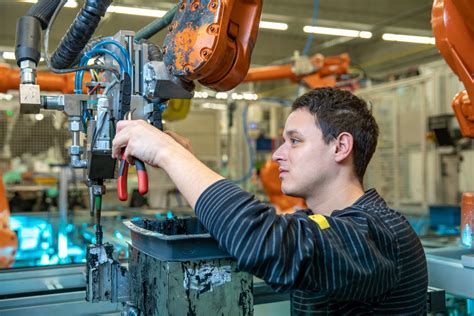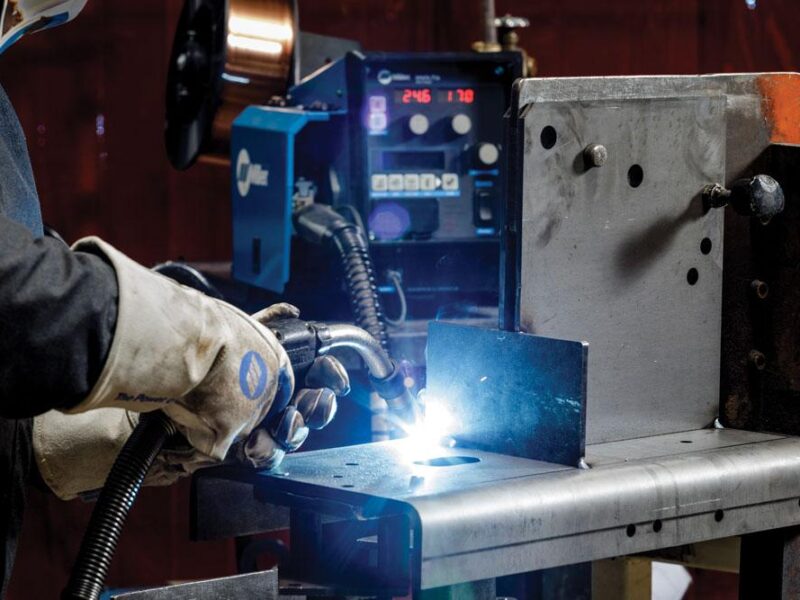Introduction
Welding requires efficiency, accuracy, and consistency. Orbital welding has transformed the industry and offers several benefits for specific applications. In this post, I’ll explore When to Use Orbital Welding: Key Applications and Advantages.
Orbital welding is accurate, automated, and highly regulated, ensuring consistency and reproducibility. This technique has found a home in sectors where weld quality is crucial.
This article will explain when and why orbital welding is best. As the aerospace business requires leak-tight connections and the pharmaceutical industry needs contamination-free welds, we’ll examine how orbital welding is used in precision and reliability-focused industries.
Join us as i explore orbital welding, its applications, and its many benefits to companies seeking welding excellence.
Understanding Orbital Welding
What is Orbital Welding?

For accurate and consistent metal joining, orbital welding is a highly specialized and automated method. Orbital welding uses advanced gear to produce consistent, high-quality welds, unlike human welding.
A computer-controlled power supply and weld head rotate around a fixed workpiece to form welds in orbital welding. To maintain ideal welding parameters, including current, speed, and gas flow, the whole process is monitored and changed in real-time.
This sophisticated welding technology is ideal for aerospace, pharmaceutical, food and beverage, semiconductor manufacturing, and nuclear power sectors that need high-quality welds. Orbital welding produces uniform, defect-free welds by automating and controlling the welding process, making it crucial for many applications.
How Does Orbital Welding Work?
Precise control by computer: All of the factors of orbital welding are managed by computer software.
Weld head rotation: To make sure everything is the same, the weld head spins around a part that stays still.
Real-time changes: Welding factors like speed, current, and gas flow are always being watched and changed.
Longitudinal consistency: The welding torch stays the same distance from the workpiece the whole time.
Accurate bead formation: orbital welding makes welds that are highly controlled and free of flaws.
Only a little physical work: It cuts down on the need for skilled welders, which makes things run more smoothly.
Perfect for essential tasks: Used a lot in fields that have strict quality standards.
Good results: the process makes welds that are better and have fewer flaws.
When to Use Orbital Welding.Key Applications and Advantages
It is best to use orbital welding in many cases and businesses where accuracy, uniformity, and high-quality welds are essential. When you might want to use orbital welding are these situations:
Aerospace Industry:
Because of the need for leak-tight joints, the aerospace industry uses them to join parts of airplane engines, fuel systems, and hydraulic lines.
Pharmaceutical and Biotechnology:
In pharmaceutical and biotechnology fields with strict rules, it is used to make welds in stainless steel pipe systems that are clean and free of contamination.
Food and Beverage:
Welds stainless steel tubes for liquid and gas transport to make sure goods are safe.
Semiconductor Manufacturing:
Maintains the cleanliness of the gas and chemical supply system, which is very important for the quality of electrical parts.
Use of orbital welding in the Nuclear Industry:
To make parts for reactors while making sure they are safe and stable.
When precision is a Must:
Uses that need perfect precision and regularity all the time.
For High-Quality Welds:
When the welds have to meet very high standards of quality.
Cost-Effective Automation:
Cost-effective automation is used when cutting worker costs and raising output are important goals.
On-Site Repairs and Maintenance:
Repairs and maintenance that can be done on-site: portable circular welding tools can be used for work in the field.
Compliance with regulations:
Businesses have to follow strict rules about the quality of welds and cleanliness.
Advantages of Orbital Welding
Orbital welding offers many advantages that make it a compelling choice for various applications.
- The automated nature of orbital welding guarantees precise and consistent welds, reducing the margin of error and minimizing rework.
- The controlled welding parameters result in high-quality welds with reduced defects and a smooth finish, enhancing the overall strength and integrity of the joints.
- Orbital welding requires minimal manual labor, leading to cost savings on skilled welders and increased productivity.
- The speed and accuracy of orbital welding contribute to shorter project timelines, increasing overall productivity.
- The reduced exposure to hazardous fumes and radiation during orbital welding improves workplace safety and operator well-being.
- Orbital welding helps industries meet stringent regulatory requirements by consistently producing clean and contamination-free welds.
Difference between TIG welding and orbital welding.
Certainly, here’s a comparison table highlighting the key differences between TIG (Tungsten Inert Gas) welding and orbital welding:
| Aspect | TIG Welding | Orbital Welding |
| Process Control | Manual and operator-dependent | Automated and computer-controlled |
| Welding Head Movement | Handheld torch | Computer-controlled rotation |
| Precision | Highly dependent on the welder’s skill | Exceptionally precise and consistent |
| Workpiece Fixation | Requires skilled manipulation | The stationary, workpiece remains still |
| Consistency | Prone to variations in weld quality | Ensures uniform and repeatable welds |
| Quality | Quality depends on the welder’s expertise | Produces consistent, high-quality welds |
| Applications | Versatile, but requires skilled welders | Ideal for critical applications and industries |
| Labor Intensity | Labor-intensive, reliance on skilled welders | Reduced labor with minimal operator intervention |
| Welding Parameters | Manually adjusted during the process | Real-time, computer-controlled adjustments |
| Speed | Slower due to manual control | Faster, contributing to shorter project timelines |
| Ideal Industries | General fabrication, repairs | Aerospace, pharmaceuticals, food, and critical applications |
| Cost | Labor costs can be substantial | Initial investment but long-term cost savings |
| Regulatory Compliance | Compliance relies on the welder’s expertise | Consistently meets stringent regulatory requirements |
This table provides a clear overview of the differences between TIG welding and orbital welding, highlighting the advantages and disadvantages of each method.
Conclusion
Ultimately, orbital welding has revolutionized the welding business by providing accuracy, consistency, and efficiency that previous approaches cannot match. As seen in this essay, the technique is used in aerospace and pharmaceutical sectors where weld quality is essential.
Orbital welding’s accuracy, weld quality, labor costs, productivity, safety, and regulatory compliance make it essential in today’s competitive industrial scene. Businesses may improve weld quality, simplify operations, save costs, and meet strict industry requirements by using orbital welding.
To stay ahead of the competition, investigate orbital welding and how it might improve your welding projects. Orbital welding may help you succeed in aerospace, pharmaceuticals, and other industries that need accurate and repeatable welds. Explore orbital welding technology and see how it may improve your projects.
FAQs
Is orbital welding suitable for small-scale applications?
- Yes, orbital welding is versatile and can be used for both small and large-scale applications. It excels in applications where precision and consistency are required.
What materials can be welded using orbital welding?
- Orbital welding is commonly used for stainless steel, carbon steel, and other alloys. The choice of material depends on the specific requirements of the application.
Can orbital welding be used for on-site repairs and maintenance?
- While orbital welding is often used in controlled environments, portable orbital welding systems are available for on-site repairs and maintenance.


